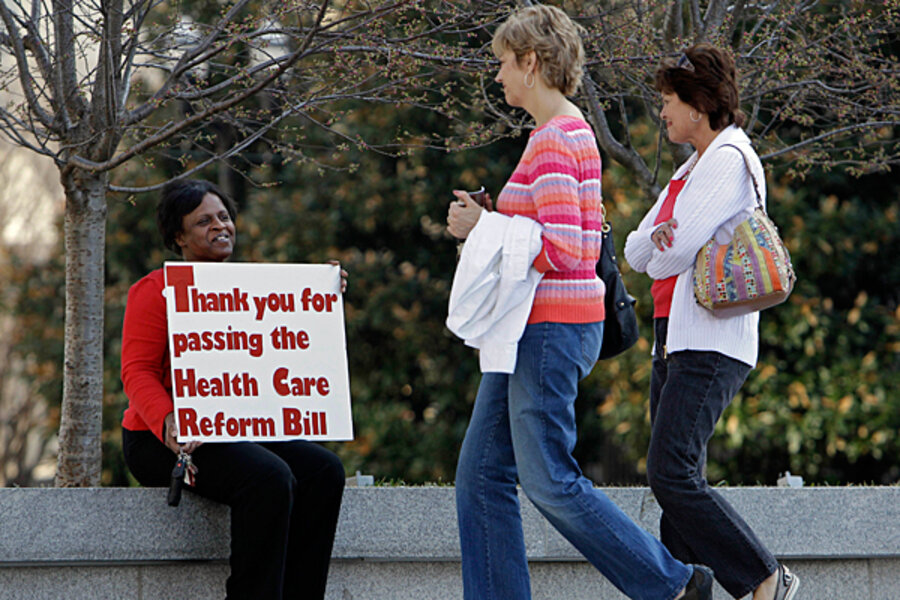Health care reform bill 101: rules for preexisting conditions
Loading...
| Washington
In America, people with health problems but no health insurance long have struggled to find and afford coverage. To those with such preexisting conditions, America’s health system has seemed, at the least, capricious: Why has it been so hard to get insurance when you need it most?
Insurers have seen this same problem from another viewpoint. Selling coverage to someone with a preexisting condition might be a bit like selling auto insurance to a driver who wants help with an already-dented car. Insurance is meant to protect someone against future events, not pay for things that have already occurred.
Well, the healthcare reform bill signed into law Tuesday by President Obama will end this situation by outlawing denial of insurance coverage to those with preexisting conditions. It is one of the most popular individual provisions in the entire 2,000-plus-page legislation.
Healthcare 101: What the bill means to you
But this change won’t take full effect for years.
The rollout starts with children. Six months from the day the bill was signed (let’s see ... that’ll be Sept. 23, by our calculation), insurers will no longer be able to exclude children with preexisting conditions from being covered by their family policy. For current policies, that means insurers will have to rescind preexisting-condition exclusions.
Insurers will not have to take the same steps for adults until Jan. 1, 2014.
Why will it take so long? Because it will be years before the bill’s mandate that individuals have health insurance takes effect. The mandate is expected to bring in tens of millions of new customers for insurance firms – compensation for accepting customers with preexisting conditions, which can be expensive.
The individual mandate does not go into effect until 2014 partly because it will take a long time to set up the state-run exchanges at which individuals and small-business employees will be able to comparison-shop for policies.
The new reform law does create a temporary backup plan for those uninsured who have health problems.
This Plan B is a short-term, national high-risk insurance pool. US citizens and legal immigrants who have preexisting conditions and have been uninsured for at least six months will be eligible to enroll in this pool and receive subsidies to help them afford the premiums.
Under the law, the premiums for this pool will be the same as would be charged for a standard population of people with varying risks. Maximum out-of-pocket cost sharing for enrollees will be $5,950 for individuals and $11,900 for families, per year.
This risk pool is supposed to be up and running within 90 days and then fade into the sunset on Jan. 1, 2014.
Join the healthcare reform discussion on Facebook
Health Care Reform Bill 101:
Introduction: What the bill means to you
Part 1: Who must buy insurance?
Part 2: Who gets subsidized insurance?
Part 3: What's a health 'exchange'?
Part 4: How long will reform take?
Part 5: Who will pay for reform?
Part 6: What will it mean for business?
Part 7: What does it mean for kids and families?
Part 8: What does it mean for seniors?
Part 9: Rules for preexisting conditions





